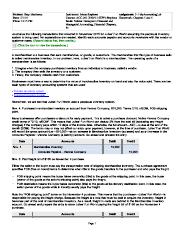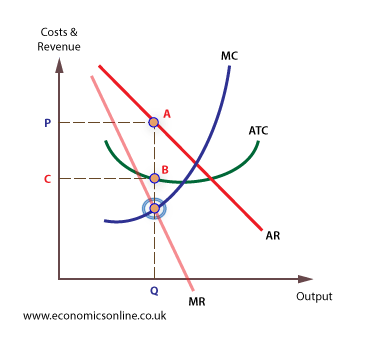Additionally, it pays $3,500 in taxes and there are changes in working capital, with a decrease of $1,000 for coffee beans and milk expenses. Crunching those numbers may not be thrilling, but it’s vital to avoid unwelcome surprises. Understanding cash flow formulas gives you a holistic view of your financial health. Operating income refers to the earnings generated before taxes and interest. Non-cash expenses include items such as issued stock and fixed asset depreciation.

On the other hand, negative cash flow will limit your ability to grow your portfolio to its full potential. Imagine a bustling coffee shop to understand the application of a cash flow formula. The shop has an operating income of $25,000 but incurs non-cash expenses of $2,000 for equipment depreciation.
Cash flow formulas: Math to manage your cash flow
The project is a combination of the remaining reserve and the capital invested in wells and equipment. The depreciation formula for the project involves the total net cash flow. Again, unlike in a Hotelling analysis, marginal cost and the net price of the resource (the ‘Hotelling rent’) do not appear. The method can be generalized to production involving more complicated conditions. The most commonly used model in the oil and gas industry to determine profit is the NCF model since this model incorporates the time value of money. As previously mentioned, the NCF model has one unique feature and this unique piece is called time zero.
monday.com – monday.com Announces Second Quarter 2023 Results – monday.com: Investor Relations
monday.com – monday.com Announces Second Quarter 2023 Results.
Posted: Mon, 14 Aug 2023 11:07:18 GMT [source]
In addition to the differences in accounting methods, companies may also use different methods for calculating depreciation and amortization. This can further complicate the comparison Net cash flow formula of net cash flow from operating activities between companies. It is important to understand the different methods used by each company in order to accurately compare their results.
How to calculate operating cash flow:
You can anticipate cash flow problems and solve them before they hit, and you can optimize your operations so cash flow troubles become a thing of the past. Your cash flow forecast is actually one of the easiest formulas to calculate. There aren’t any complex financial terms involved—it’s just a simple calculation of the cash you expect to bring in and spend over (typically) the next 30 or 90 days. In order to calculate net cash, you must first add up all cash (not credit) receipts for a period. This amount is often referred to as “gross cash.” Once totaled, cash outflows paid out for obligations and liabilities are deducted from gross cash; the difference is net cash. The sum of the three cash flow statement (CFS) sections – the net cash flow for our hypothetical company in the fiscal year ending 2021 – amounts to $40 million.
Likewise, when there is a decrease in liability account, you record a debit from your account. Since accrual account is a liability account and it is recording a decrease, you record a debit and hence the value is negative. If the inflation rate has no change, the net present value will be fixed also, based on the assumption that the rate of return is fixed. If the interest rate changes yearly, the net present value will change accordingly. This price is based on the assumption that this is the value of the machine when it will be sold after 5 years.
What is Net Cash Flow and How Do You Calculate It?
At the bottom of the operating cash flow section, we can see the total, which is labeled as “Net cash provided by (used in) operating activities.” The line is the sum of all items above it and represents the total for the period. When performing financial analysis, operating cash flow should be used in conjunction with net income, free cash flow (FCF), and other metrics to properly assess a company’s performance and financial health. In order to calculate cash flow, you must have two years of balance sheets and income statements for reference. For this example, we’ll use the following comparative balance sheet for the past two years. The increase or decrease of cash in each asset and liability account is recorded in the cash flow statement.
- The most important of these are net income, depreciation and amortization, and changes in working capital.
- It provides insight into the company’s ability to generate cash from its core operations, and can be used to compare the performance of different companies in the same industry.
- That’s because the FCF formula doesn’t account for irregular spending, earning, or investments.
- It is important to understand the different methods used by each company in order to accurately compare their results.
Learn financial statement modeling, DCF, M&A, LBO, Comps and Excel shortcuts. Since the net income metric must be adjusted for non-cash charges and changes in working capital, we’ll add the $20 million in D&A and subtract the $10 in the change in NWC. A company that is consistently profitable at the net income line could in fact still be in a poor financial state and even go bankrupt.
Net Cash Flow: Formula, Definition & Examples
These formulas help ensure you have enough cash not only to survive, but also to grow and expand. Lenders and investors also look at these metrics to assess the health of your business. Just as with our free cash flow calculation above, you’ll want to have your Balance Sheet and Income Statement at the ready, so you can pull the numbers involved in the operating cash flow formula. Similar to the current ratio, net cash is a measure of a company’s liquidity—or its ability to quickly meet its financial obligations. A company’s financial obligations can include standard operating costs, payments on debts, or investment activities.

The final section is the cash flow from financing, which comprises three items. The sum of the three sections of the CFS represents the net cash flow – i.e. the “Net Change in Cash” line item – for the given period. Net Cash Flow is the difference between the money coming in (“inflows”) and the money going out of a company (“outflows”) over a specified period. Another way to overcome this limitation is to consider other formulas in tandem with NCF (such as free cash flow).
Operating cash flow formula
Although in some cases the capability of work is equal to ready for operation, a different trend is more conservative and starts calculating the depreciation once the product is actually sold. The decisions regarding the accepted way to handle these questions depend mainly on the legal staff’s accepted concepts and if they are capable of justifying them in court. The various interpretations are aimed at reducing the cost after considering the tax on the investment by starting depreciation write-offs earlier. The general depreciation methods used in different industrial and nonindustrial projects are described in the following paragraphs.
- In general, the money spent to purchase the assets is called capital expense (CAPEX), and the cost of these assets is normally expended at the start of the project.
- Send invoices, get paid, track expenses, pay your team, and balance your books with our free financial management software.
- Since valuing the resource in a consistent manner is the aim of green accounting, correct green accounting must allocate the project value to the assets invested in the project.
- So much so that 60% of small business owners say they don’t feel knowledgeable about accounting or finance.
As soon as the investment begins to generate revenue, it will outweigh the failing of short-term weak cash flow. Net cash flow is a financial statement that calculates the amount of liquid assets that a business has. This figure shows the difference between incoming and outgoing funds, and it helps investors determine if a company can pay off its debt. It’s the difference between the amount of money a company brings in from its operating activities and how much it spends on investing activities, such as buying property and equipment.
For start-ups, the first round of financing is generally the innovator and sometimes the friends and family of the innovator. While the amounts are small, these investors are believers in the vision; they tend not to closely examine the opportunity for value and rarely want ownership in the future company. Campbell and Campbell (1987) stated that the depreciation write-offs rely on the type of expenditures. The law presently divides investment into two categories of 5- and 7-year lifetimes.
That’s because the FCF formula doesn’t account for irregular spending, earning, or investments. If you sell off a large asset, your free cash flow would go way up—but that doesn’t reflect typical cash flow for your business. When you need a better idea of typical cash flow for your business, you want to use the operating cash flow (OCF) formula. The purpose of the cash flow statement is to ensure that investors are not misled and to provide further transparency into the financial performance of a company, especially in terms of understanding its cash flows. Conceptually, the net cash flow equation consists of subtracting a company’s total cash outflows from its total cash inflows. The net cash flow formula gives you key insight into how your business is doing.
Routinely calculating your cash flows using these formulas can help ensure you don’t encounter any cash-flow problems and maintain an accurate picture of your business’s financial health. To calculate cash flow from financing activities, add your dividends paid to the repurchase of debt and equity, then subtract the total number from cash inflows from issuing equity or debt. Net income and earnings per share (EPS) are two of the most frequently referenced financial metrics, so how are they different from operating cash flow? The main difference comes down to accounting rules such as the matching principle and accrual principle when preparing financial statements.
Further, larger investments may come from venture capital companies or large medical device companies (strategies). Often, these investors will be looking to own part of the future company as part of their return on investment. In addition, the oil price is variable and expert forecasts are needed to make the calculation as accurate as possible. As already discussed, the economic study needs very specialized expertise to perform the analysis. In general, the money spent to purchase the assets is called capital expense (CAPEX), and the cost of these assets is normally expended at the start of the project.

A negative cash flow does not mean a company is unable to pay all of its obligations; it just means that the amount of cash received for that period was insufficient to cover its obligations for that same time period. A negative cash flow from investments may indicate that you’ve spent a significant amount of money on an investment that’s going to boost your revenues in the future. For example, while investing in new machinery or real estate may leave you in the red, you can expect to make your money back relatively quickly. Now, recalculate the taxes line on the income statement to exclude the interest element (since interest on debt typically incurs tax relief). Then recalculate operating cash flow (see formula above) with the new tax figure. Whether you’re an accountant, a financial analyst, or a private investor, it’s important to know how to calculate how much cash flow was generated in a period.
For example, if you’re looking to secure outside funding from a bank or venture capital firm, they’re more likely to be interested in your operating cash flow. The same goes if you begin working with an accountant or financial consultant, so it’s important to understand what OCF looks like for you before seeking funding. As a small business owner, keeping an eye on your business’s cash flow is a crucial part of successful financial management.
A decrease could be because of lower revenue or inefficient collections mechanisms. Look at this in conjunction with your total revenue and outstanding receivables for the period. Net cash flow is calculated by adding up all of the revenue generated by a business over a certain period and subtracting any costs incurred during that same period. The net cash flow formula can be used on individual properties or your whole portfolio to give you a tailored insight into your income and expenses. It is most commonly measured on a monthly and annual basis but can be calculated at any time. Keep in mind that this method provides an indirect means of calculating cash flow.
The net cash flow figure indicates whether a company has enough cash on hand to pay its obligations and meet its short-term needs. But it doesn’t tell you whether the business will be able to generate enough profits over time to be able to pay its long-term obligations like debt payments and pension expenses. The net cash flow formula is one of many calculations that landlords should be using. As well as working to give you a clearer picture of your business’s daily financial health, the formula can also help you decide whether or not it is a viable time to expand your rental property portfolio. If you have periods of repeated positive cash flow after expenses, it’s a good sign that you’ll be able to further scale your portfolio by reinvesting the money you have made back into it.
No responses yet